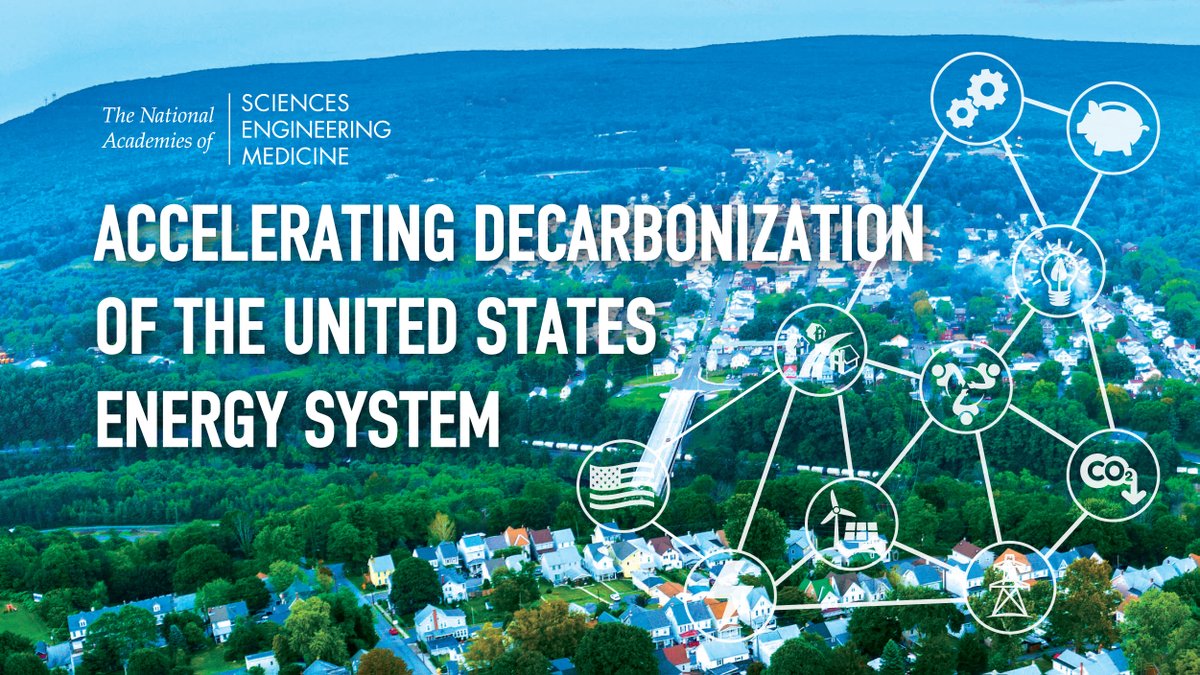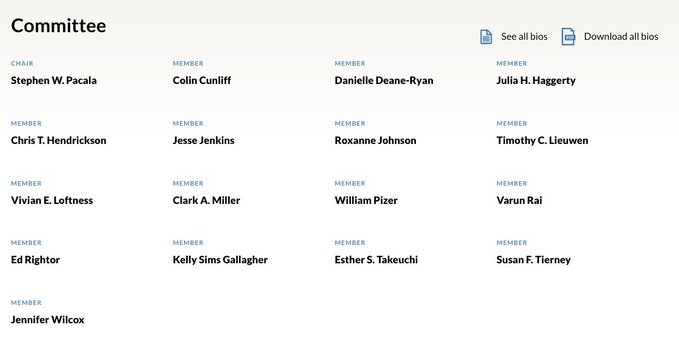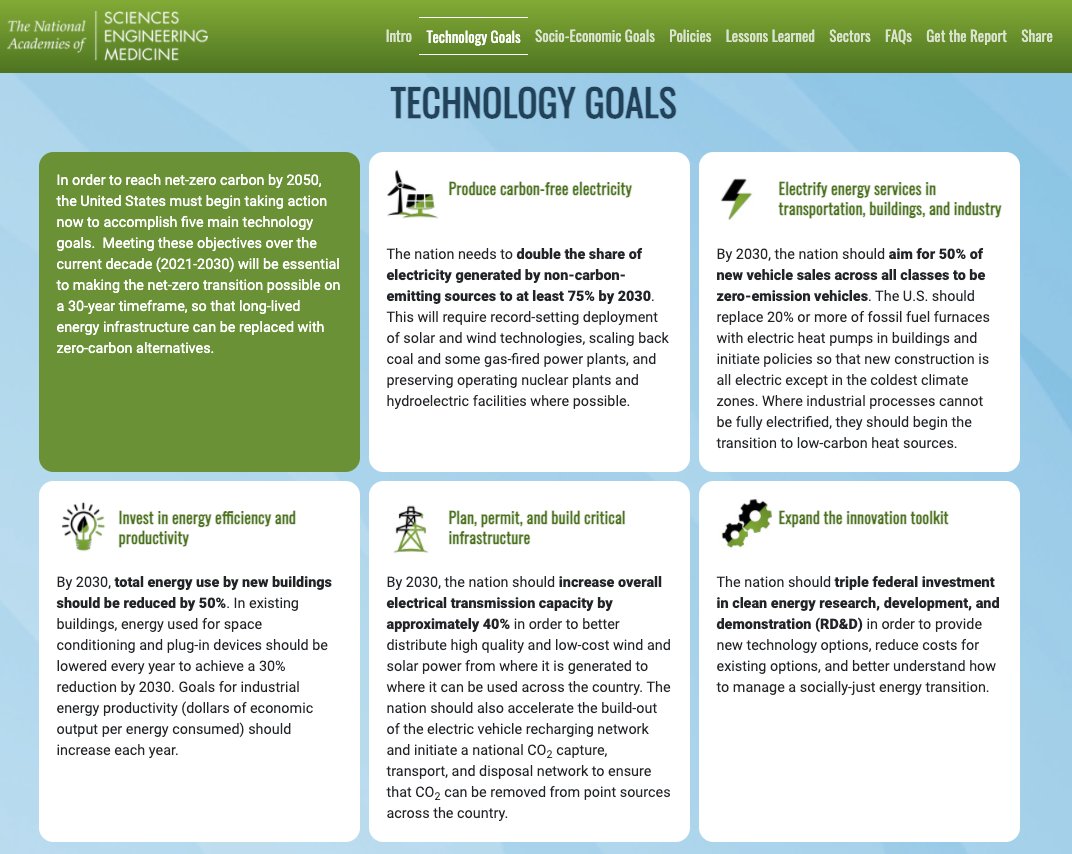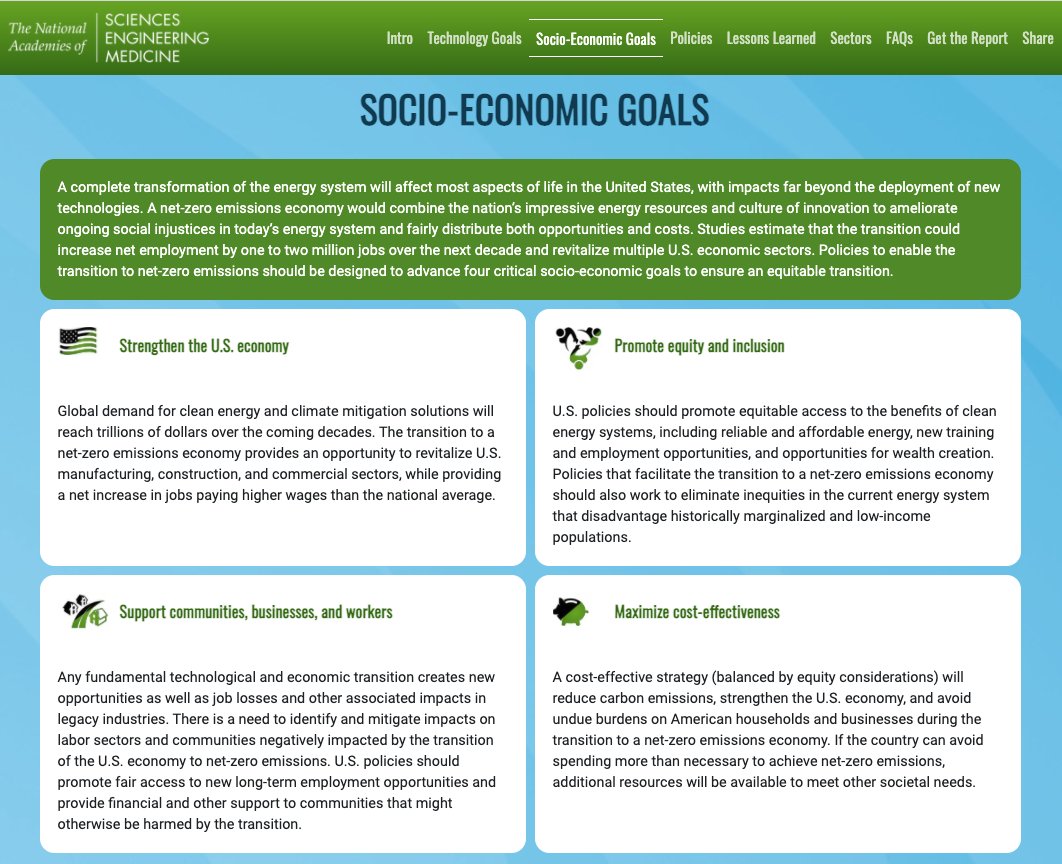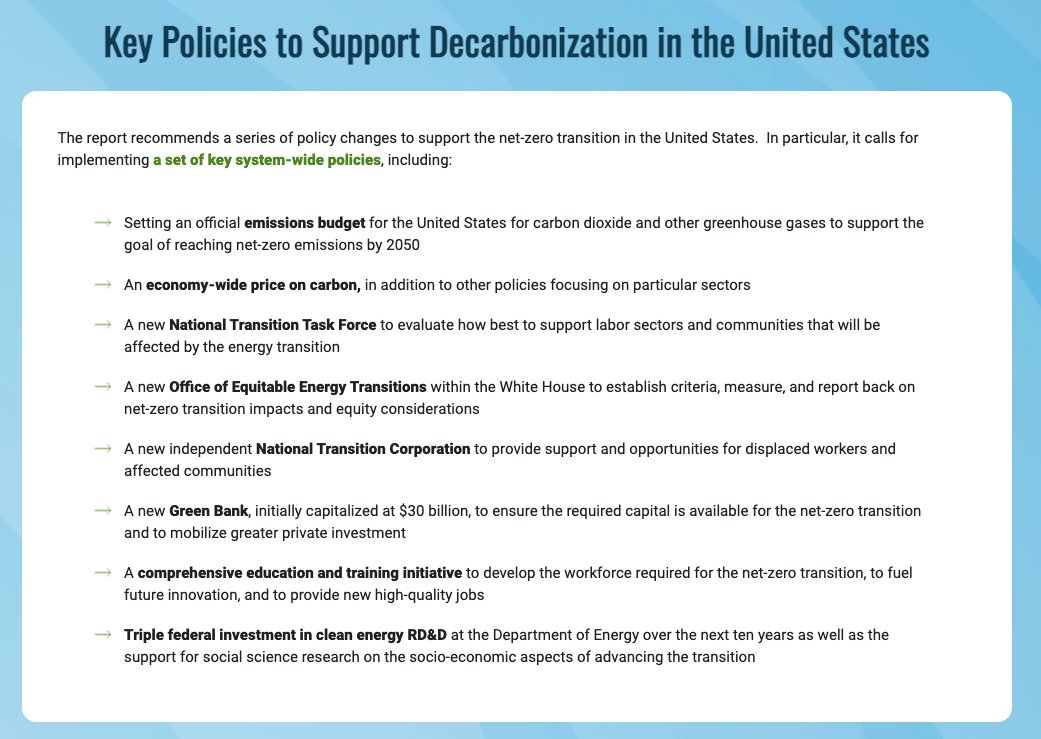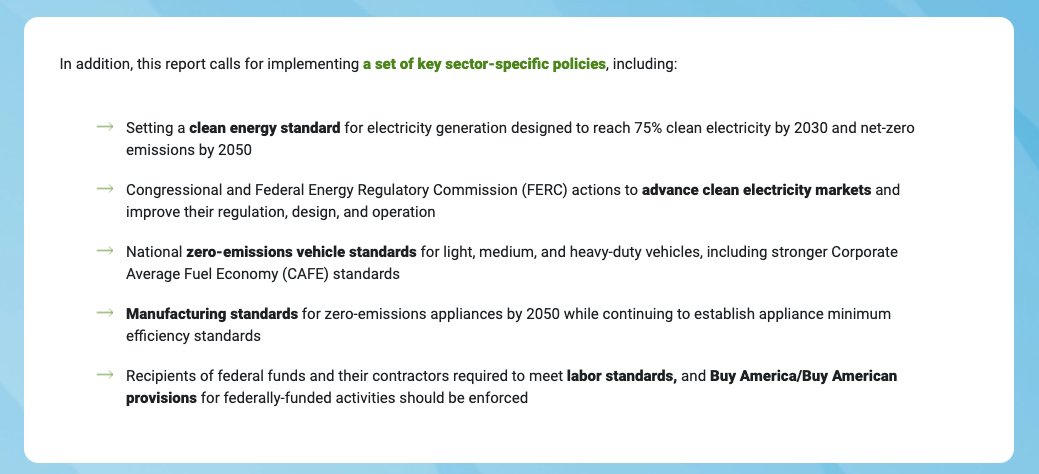As we get underway now w/a public briefing on @theNASEM's new report on "Accelerating Decarbonization in the United States," I'll be sharing some highlights here for #EnergyTwitter and with the hashtag #USDecarb. Join us. The full report is available here: http://nap.edu/decarbonization
The report is the first of two major reports from the expert committee. This is focused on priority actions and policies for the next decade to put the U.S. on track to net-zero greenhouse gas emissions by 2050. #USDecarb
Here's the committee members (myself included)
Here's the committee members (myself included)

The NASEM Committee was guided by our tasks statement: "to examine the status of technologies, policies, and societal factors needed for decarbonization and recommend research and policy needs, focused on the near and midterm (5-20 years)." #USDecarb
This report, "Accelerating Decarbonization of the United States Energy System," identifies key technological and socio-economic goals that must be achieved to put the United States on the path to reach net-zero carbon emissions by 2050. #USDecarb
@theNASEM report presents a POLICY BLUEPRINT outlining critical near-term actions for the first decade (2021-2030) of this 30-year effort, including ways to support communities that will be most impacted by the transition. #USDecarb
In order to reach net-zero carbon by 2050, the United States must begin taking action now to accomplish five main technology goals (see below for summary). #USDecarb
Meeting these objectives over the current decade (2021-2030) will be essential to making the net-zero transition possible on a 30-year timeframe, so that long-lived energy infrastructure can be replaced with zero-carbon alternatives. #USDecarb
Complete transformation of the energy system will also affect most aspects of life in the US with impacts far beyond the deployment of new techs. We thus focus on four key socio-economic goals that must also be achieved to sustain an equitable transition to net-zero #USDecarb
After surveying the decarbonization task, providing a roadmap for key technology and infrastructure changes, and describing the need for a socio-economic transition that leaves no one behind and improves the U.S. economy, we turn to the policies needed to make it happen #USDecarb
The report recommends a series of policy changes to support the net-zero transition in the United States. We provide a detailed and interactive summary table of the recommendations here, which are described in greater detail in Chapter 4: https://www.nap.edu/resource/25932/interactive/table/index.html#top #USDecarb
In particular, it calls for implementing a set of key system-wide policies (summarized in the image below), including:
1. Setting an official emissions budget for the U.S. reaching net-zero by 2050
#USDecarb
1. Setting an official emissions budget for the U.S. reaching net-zero by 2050
#USDecarb
2. An economy-wide price on carbon to provide incentives across economy, in addition to other policies focused on specific sectors
3. A National Transition Task Force to evaluate how to support labor sectors & communities that will be affected by the energy transition
#USDecarb
3. A National Transition Task Force to evaluate how to support labor sectors & communities that will be affected by the energy transition
#USDecarb
4. A new Office of Equitable Energy Transitions within the White House to establish criteria, measure, and report back on net-zero transition impacts and equity considerations
#USDecarb
#USDecarb
5. An independent National Transition Corporation to provide support & opportunities for displaced workers & affected communities
6. A Green Bank to ensure the required capital is available for the net-zero transition and to mobilize greater private investment
#USDecarb
6. A Green Bank to ensure the required capital is available for the net-zero transition and to mobilize greater private investment
#USDecarb
7. A comprehensive education and training initiative to develop the workforce required for the net-zero transition, to fuel future innovation, and to provide new high-quality jobs
#USDecarb
#USDecarb
8. Triple federal investment in clean energy RD&D at the Department of Energy over the next ten years as well as the support for social science research on the socio-economic aspects of advancing the transition #USDecarb
In addition to economy-wide, cross-cutting policies, the report calls for implementing a set of key sector-specific policies, including
1. Setting a clean energy standard for electricity generation designed to reach >=75% clean electricity by 2030 and net-zero by 2050
#USDecarb
1. Setting a clean energy standard for electricity generation designed to reach >=75% clean electricity by 2030 and net-zero by 2050
#USDecarb
2. Congressional and Federal Energy Regulatory Commission (FERC) actions to advance clean electricity markets and improve their regulation, design, and operation
#USDecarb
#USDecarb
3. National zero-emissions vehicle standards for light, medium, and heavy-duty vehicles, including stronger Corporate Average Fuel Economy (CAFE) standards
#USDecarb
#USDecarb
4. Manufacturing standards for zero-emissions appliances by 2050 while continuing to establish appliance minimum efficiency standards
#USDecarb
#USDecarb
5. Recipients of federal funds and their contractors required to meet labor standards, and Buy America/Buy American provisions for federally-funded activities should be enforced
#USDecarb
#USDecarb
Those are about a dozen of the more than 30 specific policy recommendations (or groups of recommendations) in the full report. See the table here for more https://www.nap.edu/resource/25932/interactive/table/index.html#top and Chapter 4 of full report here: https://www.nap.edu/catalog/25932
I'll leave it there for now!
#USDecarb
I'll leave it there for now!
#USDecarb

 Read on Twitter
Read on Twitter